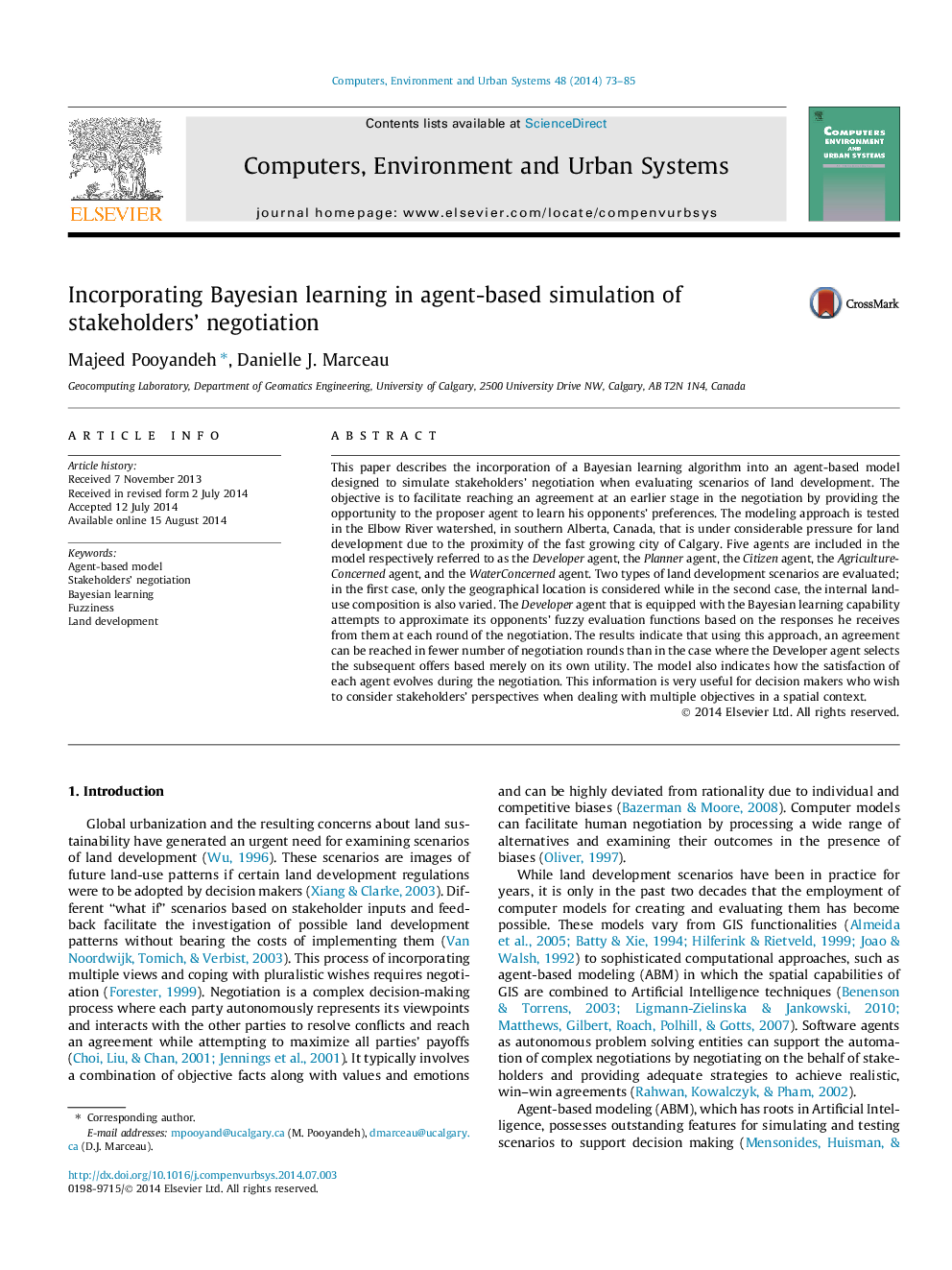| Article ID | Journal | Published Year | Pages | File Type |
|---|---|---|---|---|
| 506344 | Computers, Environment and Urban Systems | 2014 | 13 Pages |
•An agent-based model was developed to simulate stakeholders’ negotiation regarding land development.•A Bayesian learning approach was used to enable the Developer agent with learning capability.•Two scenarios which included change in location and land-use composition were run both with and without learning capability.•The results indicate that with Bayesian learning an agreement can be reached in a fewer number of negotiation rounds.
This paper describes the incorporation of a Bayesian learning algorithm into an agent-based model designed to simulate stakeholders’ negotiation when evaluating scenarios of land development. The objective is to facilitate reaching an agreement at an earlier stage in the negotiation by providing the opportunity to the proposer agent to learn his opponents’ preferences. The modeling approach is tested in the Elbow River watershed, in southern Alberta, Canada, that is under considerable pressure for land development due to the proximity of the fast growing city of Calgary. Five agents are included in the model respectively referred to as the Developer agent, the Planner agent, the Citizen agent, the AgricultureConcerned agent, and the WaterConcerned agent. Two types of land development scenarios are evaluated; in the first case, only the geographical location is considered while in the second case, the internal land-use composition is also varied. The Developer agent that is equipped with the Bayesian learning capability attempts to approximate its opponents’ fuzzy evaluation functions based on the responses he receives from them at each round of the negotiation. The results indicate that using this approach, an agreement can be reached in fewer number of negotiation rounds than in the case where the Developer agent selects the subsequent offers based merely on its own utility. The model also indicates how the satisfaction of each agent evolves during the negotiation. This information is very useful for decision makers who wish to consider stakeholders’ perspectives when dealing with multiple objectives in a spatial context.
